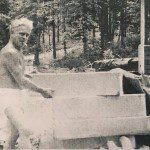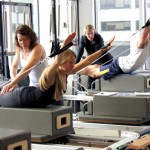Most people with even just a passing acquaintance with Pilates are familiar with the popular Ab Series from mat classes, and the Reformer is easily recognizable after a few sessions at a classical Pilates studio. But there’s a whole other closet that’s waiting to be opened. It’s full of toys, gadgets, and other accessories that are designed to give you that deeper stretch or extra push. Let’s take a peek inside!
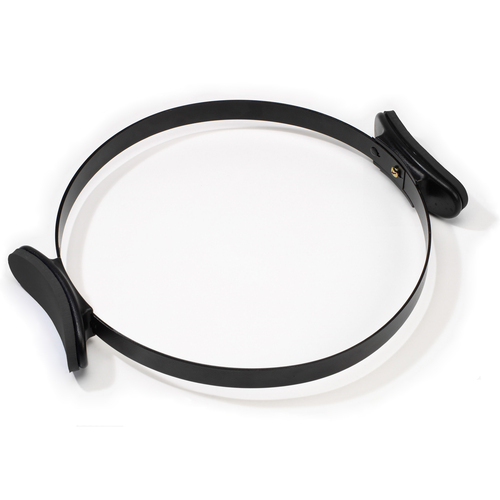 Magic Circle – The late Pilates elder Romana Kryzanowska suggested that Joseph Pilates’ fondness for beer led to the development of the Magic Circle. The springy hoop that we use to enhance leg and arm exercises may have been inspired from the metal hoops encircling the kegs of Joe’s favorite brew. Fitness fact, or Pilates legend? Ponder on that while the Magic Circle goes to work on your hip adductors!
Magic Circle – The late Pilates elder Romana Kryzanowska suggested that Joseph Pilates’ fondness for beer led to the development of the Magic Circle. The springy hoop that we use to enhance leg and arm exercises may have been inspired from the metal hoops encircling the kegs of Joe’s favorite brew. Fitness fact, or Pilates legend? Ponder on that while the Magic Circle goes to work on your hip adductors!
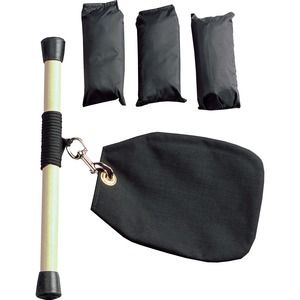 Sandbag – Attached to a short bar or held directly in the hands, the sandbag adds a little extra heft to Pilates exercise. Working with a sandbag can strengthen the wrists, helping to relieve symptoms of carpal tunnel. They can also deepen stretches and make gravity work in your favor to get even more out of reps (which, in comparison to other forms of exercise, the Pilates method keeps low). Most sandbags come with adjustable weight, so you can tailor them to fit to your comfort level with different exercises.
Sandbag – Attached to a short bar or held directly in the hands, the sandbag adds a little extra heft to Pilates exercise. Working with a sandbag can strengthen the wrists, helping to relieve symptoms of carpal tunnel. They can also deepen stretches and make gravity work in your favor to get even more out of reps (which, in comparison to other forms of exercise, the Pilates method keeps low). Most sandbags come with adjustable weight, so you can tailor them to fit to your comfort level with different exercises.
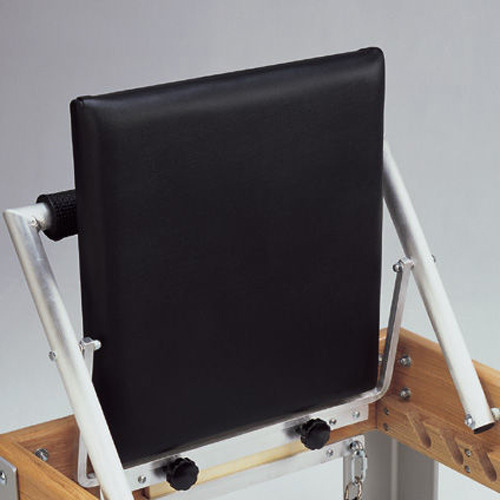 Jump Board – In its inception, this extension of the Reformer had nothing to do with exercise; it was actually prototyped in the late ’80s by NASA scientists to simulate the effects of weightlessness on astronauts-in-training. However, the Pilates method has a history of being popular among professional dancers and gymnasts. For these athletes, practicing and strengthening their jump is a critical exercise. The original manufacturer of Pilates equipment, Gratz Design, modified NASA’s prototype to fit the Reformer, and the Jump Board was born.
Jump Board – In its inception, this extension of the Reformer had nothing to do with exercise; it was actually prototyped in the late ’80s by NASA scientists to simulate the effects of weightlessness on astronauts-in-training. However, the Pilates method has a history of being popular among professional dancers and gymnasts. For these athletes, practicing and strengthening their jump is a critical exercise. The original manufacturer of Pilates equipment, Gratz Design, modified NASA’s prototype to fit the Reformer, and the Jump Board was born.
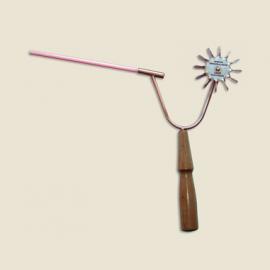 Pinwheel – Now for something completely different. In the Pilates method, everything originates from the core, and that’s not just the abdominal muscles. The core also includes the diaphragm, which controls the breath — and the breath is an essential part of Pilates practice. Yes, it’s all too easy to forget about the breath as you’re fighting to support the perfect Teaser, and that’s why the Pinwheel (also called the “Breath-a-cizer”) has been part of the method from the beginning. Making it spin with your exhale provides valuable visual feedback that brings focus back to the breath and trains you to empty the lungs completely. Joseph Pilates invented this handheld device to increase his students’ lung capacity, flush all stale air from the respiratory system, and help the body eliminate atmospheric pollutants.
Pinwheel – Now for something completely different. In the Pilates method, everything originates from the core, and that’s not just the abdominal muscles. The core also includes the diaphragm, which controls the breath — and the breath is an essential part of Pilates practice. Yes, it’s all too easy to forget about the breath as you’re fighting to support the perfect Teaser, and that’s why the Pinwheel (also called the “Breath-a-cizer”) has been part of the method from the beginning. Making it spin with your exhale provides valuable visual feedback that brings focus back to the breath and trains you to empty the lungs completely. Joseph Pilates invented this handheld device to increase his students’ lung capacity, flush all stale air from the respiratory system, and help the body eliminate atmospheric pollutants.
That’s not all you’ll find in the Pilates toy chest! Whether you need a little assistance in accessing a certain exercise, you want to improve your form, or you’re eager to challenge your body to reach the next level, just ask your Pilates instructor about incorporating Pilates accessories into your regular method.
Photos of Pilates accessories courtesy of Peak Pilates® (http://www.peakpilates.com/ and Pilatesology (https://pilatesology.com/.


